
Today is World Oceans Day, a day where people around the planet celebrate and honour the body of water which links us all, for what it provides humans and what it represents.
People around the world depend on a healthy, clean ocean in order to survive and thrive. World Oceans Day is the official UN-designated international day of ocean celebration. On June 8th each year, we celebrate the ocean, its importance in our lives, and how we can protect it.
WorldOceansDay.org aims to help you make a difference in your life, community, and world by taking action to protect our ocean—for present and future generations. Despite the huge challenges facing the world's ocean, by working together we can achieve a healthy ocean that provides for the billions of humans, plants and animals which depend on it every day.
[...]
Why Should I Celebrate World Oceans Day?
The world's ocean:
Generates most of the oxygen we breathe
Helps feed us
Regulates our climate
Cleans the water we drink
Offers us a pharmacopoeia of potential medicines
Provides limitless inspiration!
The two-year theme for 2013 and 2014 is together we have the power to protect the ocean.
There are many issues plaguing the oceans and its inhabitants. Pollution, climate change, shipping, invasive species, unsustainable exploitation and overfishing, and devastation of critical habitats through development, destructive fishing practices or unregulated tourism all threaten our seas, marine life, and coastal communities.

Coral bleaching in Chagos Archipelago, Indian Ocean. This is often a sign that reefs are stressed by high temperatures as a result of warmer temperatures. Many corals simply don't recover from these bleaching episodes and die;
(Photo by World Resources Institute)

Carcass of a sea turtle entangled in an abandoned fishing net off the coast of Zanzibar, East Africa;
(Photo by Nick Robertson-Brown)

The prevalence of plastic trash in our oceans affects countless marine animals. This is the carcass of an albatross on Midway Atoll in the Pacific Ocean that had ingested all manner of plastic items;
(Photo by Chris Jordan, from U.S. Fish and Wildlife Service Headquarters)
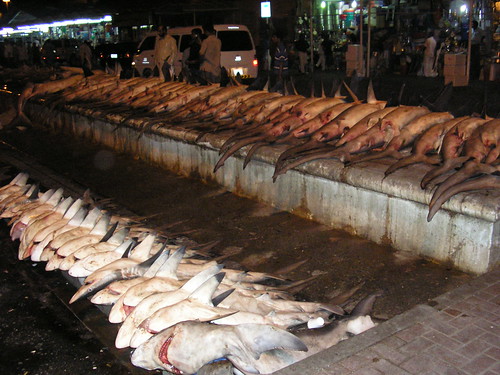
Sharks for sale at a fish market in Dubai. Many species of sharks are simply being fished at unsustainable rates, and current measures to monitor and regulate the harvest are seen as inadequate;
(Photo by Paul Fenwick)
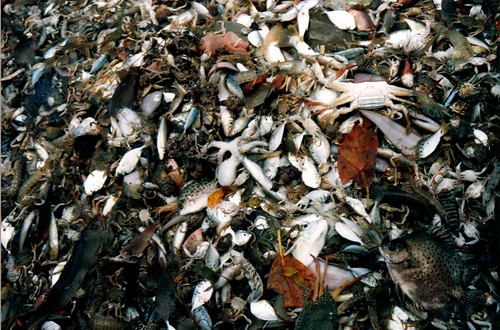
A Malaysian fishing trawler's catch - many fishing methods are indiscriminate and end up catching (and killing) large numbers of marine creatures that are not targeted, otherwise known as bycatch. A species might not be eaten by people, but could still end up declining due to such techniques;
(Photo by Abu Shia)
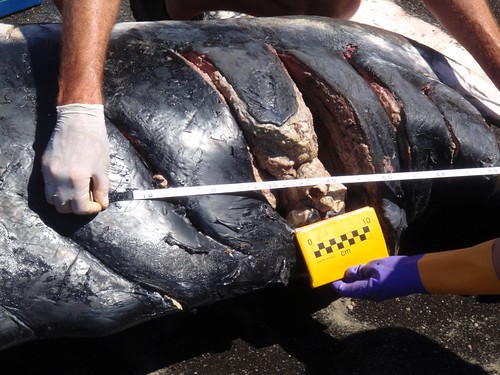
Dead humpback whale showing injuries indicating that it had been struck by a boat's propeller, Australia. Even the ocean's largest creatures are at risk from the huge volumes of maritime traffic;
(Photo by NSW National Parks and Wildlife Service)
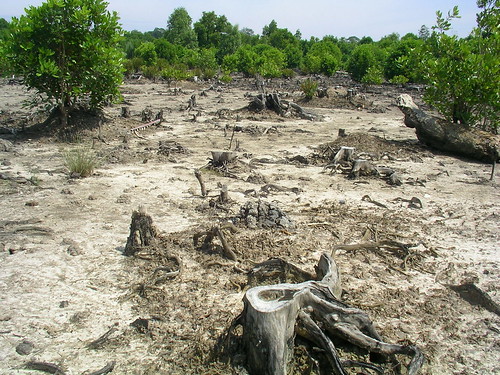
Clearing of mangrove forests, Indonesia;
(Photo by stefanottomanski)

Lionfish on a reef in Honduras. Native to the Indo-Pacific, lionfishes that escaped from aquariums or were abandoned by their owners have managed to become established in the Caribbean. In this new environment, they encounter fishes that never had to deal with lionfish before. Without predators, and with lots of prey that don't know how to avoid lionfishes, it is now feared that these voracious predators are contributing to the decline of many Caribbean fish species and the overall health of these already seriously threatened reefs;
PRI's The World
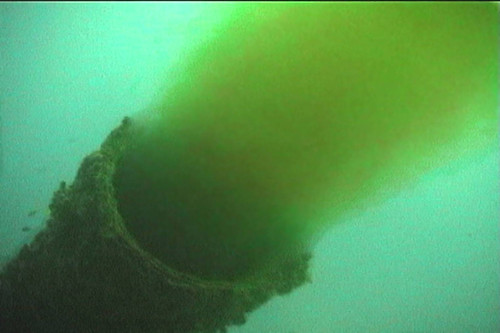
Sewage discharge close to a coral reef, Florida;
(Photo by eutrophication&hypoxia)
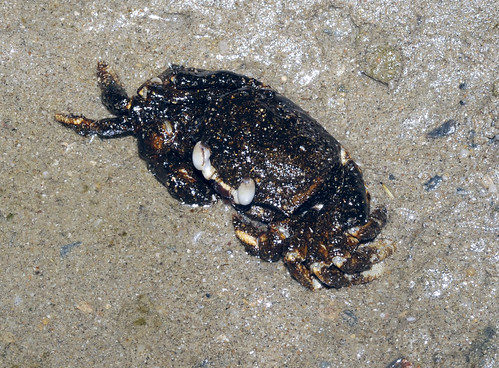
Ghost crab covered in crude oil after an oil spill took place off Changi;
(Photo by Ria)
As depressing as these images may be, these represent just a tiny slice of the myriad issues that concern the health of our marine ecosystems. And it's not just about saving dolphins and sea turtles and coral reefs; many of these habitats help provide us with food and medicines, reduce the damage from storms and strong waves, filter and cleanse the water, and remove carbon dioxide from the atmosphere and mitigate the greenhouse effect. It's no surprise that 60% of the world's population lives within 60 kilometres of the coast, with many of our megacities being situated close to the sea as well. By this benchmark, everyone in Singapore is actually living near the coast.
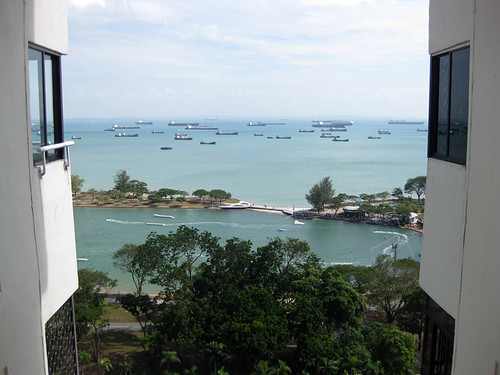
The view from a flat in Marine Parade;
(Photo by brian)
Many of us forget that we live on an island, and don't often realise just how much we rely on the sea. For our size, our port processes a mind-blowing proportion of global shipping traffic, and the maritime trade that made Singapore so attractive for centuries still sustains much of our economy.
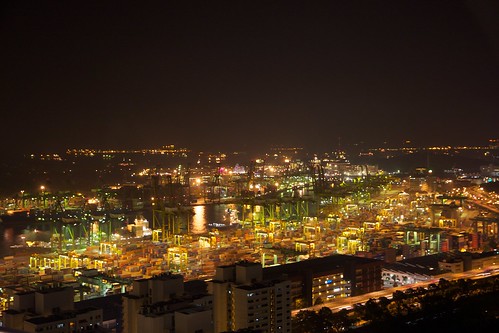
Singapore Port at night;
(Photo by Sally Zhuo)
We love our seafood, and while there are efforts to encourage domestic aquaculture, much of it comes from overseas.

Jurong Fishery Port;
(Photo by TW Cheong)
And of course, many of us visit the coasts for recreation.

(Photo by ilya)

(Photo by parameters75)
*cough*
Our seas have been greatly altered over the decades, especially after the 1950s.


You can see how the coastline has changed, and how we have lost many of our original marine habitats.
Because of land reclamation, shipping, and dredging to maintain these shipping channels, which stirs up sediments, our waters are often turbid and murky. As a result many people assume that nothing survives in our waters. And yet, you'd be surprised at what can be found in our seas.
Next up, a selection of marine life that you can find in Singapore waters, and what you can do to help protect our seas.
(Cross-posted to SBA Plus. Do support me in the Singapore Blog Awards!)